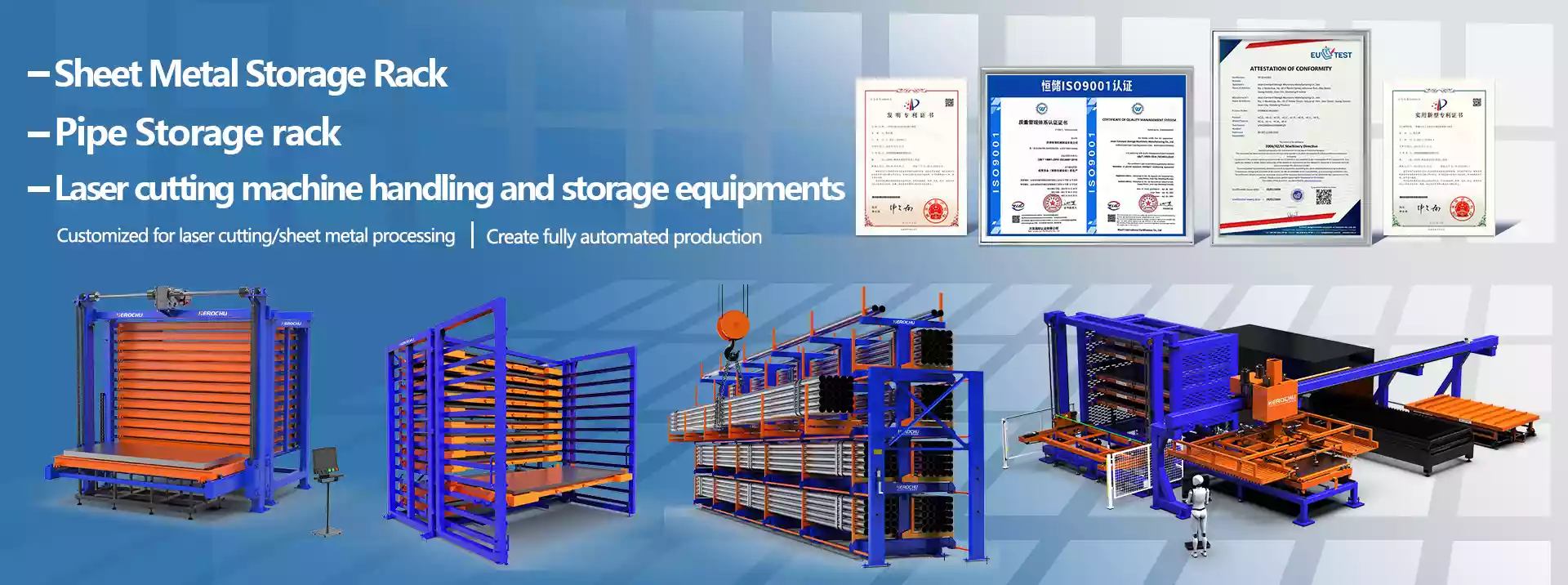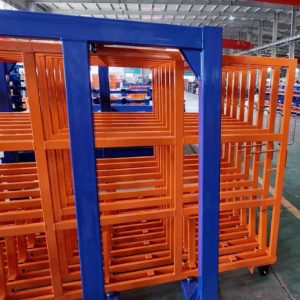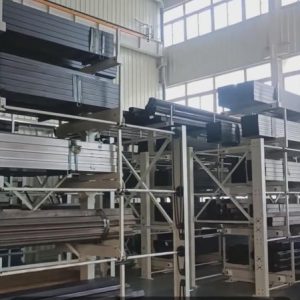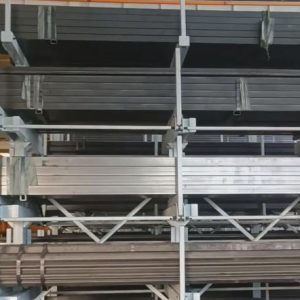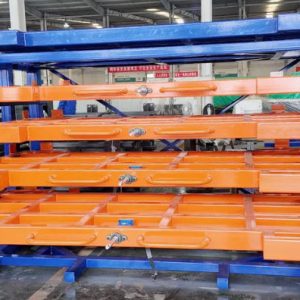Herochu Professional Heavy-Duty Roll-Out Steel Plate Storage Racks for Delicate Surfaces
From USD 4,399 | CE • UE • ISO 9001 | Ships in 20 days | Mirror-Safe | 100 % Selective | 4.5 t per Drawer
A #4 mirror-polished sheet lands on your dock at USD 280 per square metre. One careless drag across the stack below and the reflected ceiling lights turn into a scarred river. The panel is now scrap, the laser bed sits idle, and the night-shift premium you promised the customer becomes a surcharge you pay yourself. The Herochu roll-out rack was conceived to make that story impossible. Instead of stacking, each sheet lives on its own steel cradle that glides out like a server drawer, letting a vacuum lifter descend, grab, and leave without the metal ever kissing another surface.
Friction is the enemy, but weight is the accomplice. A 3 mm stainless sheet 3 m long weighs 72 kg; try pulling that from the middle of a pile and you will bow the panel, drag grit across the finish, or lose your grip entirely. Our answer is a rack that removes the pile. Columns are punched on 100 mm centres so you can store 0.5 mm decorative copper one metre apart and 20 mm ship-building plate the next. Each arm is a laser-cut Q235 box beam, welded to a carriage that rides on sealed cam-follower bearings. Push the crank handle—one turn moves the drawer 28 mm—so even a 2.5 t load glides without inertia. The mechanism is reversible; release the ratchet and the drawer retracts under its own weight, slow and controlled, no slam, no bounce.
For high-velocity lines we build forklift pockets into the drawer frame. An operator slips the forks under the toe plate, lifts the entire cradle, and drives directly to the shear or fiber laser. The sheet travels still clamped between neoprene rails, arrives at the machine, and is picked off by the same vacuum lifter. Total touches: two. Total scratches: zero. One Ohio fabricator timed the swap at 42 seconds, down from 6 minutes of peel-and-pray stacking. At 18 swaps per day the rack freed 1.6 hours of laser time—enough extra capacity to pay for itself in 14 weeks.
The bearings are sealed for life, but the rails still deserve respect. We line each arm with 6 mm food-grade PVC that compresses under load, trapping abrasive particles before they meet the metal. The insert is replaceable; tear it off in seconds when glitter from a previous grind job starts to embed. For ultra-critical finishes we offer felt-lined arms or high-density UHMW strips that slide like it’s on air. Neither option changes the load rating; even the softest liner still shoulders 1.5 t per arm.
Density follows the same logic. A double-sided tower 9 m long stores 42 t of material yet needs only 1.5 m of aisle. Compare that to fixed cantilever racks that demand 3.5 m on both sides and the floor-space saving crosses 60 %. One customer in Naples reclaimed 400 m²—enough to install two new CNC saws and still park the forklift fleet indoors. Another in Dubai stacked three towers back-to-back, added a 20 m bridge crane, and now feeds two laser lines lights-out.
Expansion is bolt-on, not knock-down. Join a starter bay to an add-on and the moment joint uses four bolts rated at 45 kN each—no sleeve, no weakening. Grow from 3 m to 12 m height by splicing columns; every splice ships pre-milled and includes fish-plates. Arms can be added or removed while the rack is loaded; slide the carriage to the maintenance position, knock out the taper pin, drop in the new arm, done. Your storage grows with your next contract instead of waiting for next year’s budget.
Control stays deliberately simple. A manual crank with 18:1 reduction lets a 60 kg operator move 4 t without breaking a sweat. Prefer push-button? A 0.75 kW brake motor extends the drawer in 20 seconds and locks it with ±1 mm repeatability. Only one arm can be open at a time—mechanical interlock, no PLC required. If you run an automated crane, photo-eyes shut off travel when a drawer is extended; the signal wires through a common M12 plug, so integration takes minutes, not days.
Safety is engineered, not added later. Each arm carries a 3-position lock: closed, 50 % vent, 100 % extended. A spring-loaded detent prevents accidental roll-out during forklift shocks. The base plate is 12 mm thick and slotted for M20 chemical anchors; pull-out tests show 72 kN per bolt, enough for seismic zone 4. For high-rise buildings where anchors are forbidden, we supply a 3 m steel spreader frame that distributes load to 2 t per square metre—landlord smiles, permit closed.

Installation respects your uptime. Towers ship in 3 m modules that fit through a standard door. Two fitters, one scissor lift, four hours: the tower is plumb, anchored, and ready for metal. No pit, no fire-suppression upgrade, no permit nightmare. If you relocate, reverse the process and reinstall across town the same afternoon; the asset travels with you, not with the concrete.
Return on investment is brutal math. A 2 m × 1 m hairline-brushed panel costs USD 310; scratch one face and you lose material, labour, and machine time—about USD 450 per incident. Eliminate one rejection per month and the rack saves USD 5,400 per year—more than the purchase price of a three-drawer starter. Factor in denser storage, faster laser change-overs, and the ability to quote tighter margins on high-end work, and payback typically lands under 6 months. After that the rack is a profit centre, not a depreciation line.
Your customer will never see the rack, but they will see the reflection: flawless mirror doors, brushed grain that runs uninterrupted from ceiling to floor, edges that meet with micrometre precision. Store once, retrieve untouched, deliver perfect. Herochu roll-out racks turn the cost of scrap into the luxury of certainty—and certainty, in the fabrication business, is the fastest way to a margin that lasts.

